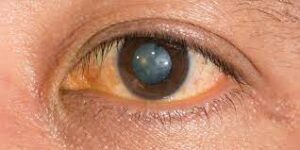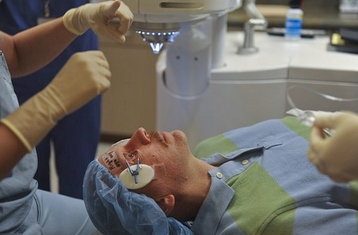Senile cataract is a condition that impairs vision as individuals age. This disease is characterized by gradual, progressive clouding and thickening of the lens in the eye. It is the world’s leading cause of preventable blindness. An immature cataract is characterized by an abnormally high calcium content in the lens of the eye, low transparency, and yellow or brownish color. Immature cataracts are rare, with only about 2% of cataracts being considered to be immature, and they are more common in people over age 60.
Contents
What Is An Immature Senile Cataract?

An immature senile cataract is a type of cataract that typically affects older adults. It is characterized by a cloudy or opaque area in the center of the eye’s lens. This can cause problems with vision, such as difficulty seeing at night or decreased clarity of vision.
In some cases, an immature senile cataract may also cause glare or halos around lights. It usually involves surgery to remove the cloudy lens and replace it with a clear artificial lens.
This is a type of cataract that has variable levels of opacification in the lens and are often present at both high- and low-density areas. These may also be filled with clear fibers.
Causes Of The Immature Senile Cataract
Cataracts are a common condition that affects people of all ages, but they are especially common in older adults. A cataract is a clouding of the lens of the eye, and it can cause problems with vision.
There are many different types of cataracts, and one type is called an immature senile cataract. This type of cataract is typically found in older adults, and it can be caused by a number of different things.
One potential cause of an immature senile cataract is long-term exposure to UV light. This can happen if you spend a lot of time outdoors without wearing sunglasses or if you work in a job that involves exposure to UV light (such as welding).
Another potential cause of an immature senile cataract is diabetes. Diabetes can damage the blood vessels in your eyes, and this can lead to the formation of cataracts.
If you have an immature senile cataract, you may not notice any changes in your vision at first. However, as the cataract grows, you may start to experience symptoms such as blurry vision, trouble seeing at night, or difficulty reading. If you experience any of these symptoms, you should see an eye doctor for a comprehensive eye exam.
Signs And Symptoms
A patient with senile cataract has a gradual progressive history of worsening vision, and often the person will be complaining of blurry near-sightedness at night.
A routine ocular examination might be able to spot signs of cataract-related blindness. In many cases, patients won’t have any other symptoms and rely on the eyesight test to go for a diagnosis, which is why it’s so important to get checked out if you think you might be having some problem with the lens. Common symptoms of cataracts include blurry vision, pain or redness in or around the eye, light sensitivity, halos around objects, and loss of contrast.
Glare
Patients with cataracts will usually complain of glare or dazzle when looking at objects in the distance. This can also include being sensitive to lights like sunlight or headlights. The location and size of the opacity will determine how much glare or dazzle people experience.
Uniocular Polyopia
Symptoms of this disease start to show is when double images are visible without any other changes. It is a sign that the lens isn’t focusing correctly. Irregular refraction means that the lens is to blame, and it will start showing up as one of the earliest symptoms.
Colored Halos
This can be explained by the presence of water droplets in the lens. Patients often perceive it as different colors breaking apart white light.
Black Spot in front of eyes
There are certain spots in the eye that are stationary, which may be perceived by patients with cataracts.
Loss Of Vision
Senile cataract often leads to visual deterioration, with painless and gradual progression as a function of age. Patients who experience opacities in the central areas of their vision don’t typically notice any visual changes until they’re already experiencing early vision loss, whereas those with peripheral opacities often have delayed vision loss. The size of the pupils will also affect night and day vision- patients with nuclear sclerosis will experience further deterioration of their distance vision because they are suffering from myopia.
Complications
There are various complications as follows:
Phacoanaphylactic uveitis
In the case that there is a rupture of the lens capsule, this can cause a worsening of the uveitis condition. Symptoms of phacoanaphylactic uveitis following traumatic or surgical perforation include severe sensitivity to light, pain, decreased vision, and redness in the eye area.
Lens-induced glaucoma
It’s split into two major categories. One of these is the open-angle category, which is related to lens proteins leaking through the capsule of a late or hypermature cataract. The angle-closure category is related to lens swelling or dislocation.
What Are The Stages Of Senile Cataracts?
There are various stages of Senile cataract. They are as follows:
Cortical Senile Cataract
Cataracts happen to be less common but are more likely to affect people who are older. There are both symptoms that can be analyzed in the cortex and symptoms that may arise from other parts of the lens. Early symptoms may include nausea, vomiting, and abdominal pain. In the later stages of cataracts, sufferers will experience decreased levels of total proteins, amino acids, potassium, and an increased concentration of sodium as well as profound dehydration of the lens. This is followed by the coagulation of proteins in different parts of the eye.
Nuclear Senile Cataract
As the next stage of degeneration sets in, more changes occur. Nuclear sclerosis and dehydration associated with senescence lead to a hard cataract. Though there are no measurable deficiencies in the content or distribution of proteins, the nucleus is compressed.
Immature Senile Cataract
Intumescence means that the lens becomes swollen and cloudy. The lens may also become partially detached from its attachment to the capsule (called ‘detachment’). There may also be a large number of proteins in the lens and nucleus.
Mature Senile Cataract
The formation of opacification occurs in all parts of the lens. The lens becomes white in color and this is known as a “ripe cataract.”
Hypermature Senile Cataract
Hypermaturity can occur in mature cataracts that are left untreated. They can also be classified as a Morgagni or sclerosis type.
How Is It Treated?
There are a few different ways to treat an immature senile cataract, and the best method will usually depend on the severity of the condition. There are several treatment options for an immature senile cataract. One option is to simply wait and see if the cataract gets worse over time.
In some cases, simply wearing glasses or contact lenses can help to improve vision. For more severe cases, surgery may be necessary to remove the cloudy lens and replace it with a clear artificial one.
This type of surgery is called cataract surgery, and it is typically very successful in restoring vision.
Senile cataracts can be delayed, prevented, or reversed with the aid of FDA-approved methods. Unfortunately, there is no treatment that has been proven to work in humans. However, aldose reductase inhibitors in animals have shown promising results in cases of sugar cataracts; how effective this type of medical treatment is for humans is still uncertain.
In the surgical treatment of cataracts, extraction of the lens provides definite management. Phacoemulsification offers benefits in terms of those with a smaller incision size upon cataract surgery
To remove cataracts surgically, you first have to perform lens extraction. One modern type of phacoemulsification is less invasive and creates a smaller incision after the surgery. This can still pose an issue if the following are discovered: postoperative complications such as visual disturbances, surgical complications like cloudy lenses or blood in the anterior chamber of your eye, pre-existing eye diseases, or complex surgical techniques.
In the case that there is a rupture of the lens capsule, this can cause a worsening of the uveitis condition. Symptoms of phacoanaphylactic uveitis following traumatic or surgical perforation include severe sensitivity to light, pain, decreased vision, and redness in the eye area.
Conclusion
In conclusion, an immature senile cataract is a common condition that affects older people. It is caused by the hardening of the lenses in the eyes, and it can lead to vision problems. Treatment typically involves surgically removing the affected lens. If you think your cataract may have an immature senile cataract, be sure to take them to the doctor for an evaluation.
Cataract surgery is a safe and painless procedure. At MantraCare we have a team of experienced eye surgeons, who will be happy to answer any questions on cataract surgery. Call us at +91-9711116605 for any inquiries.
